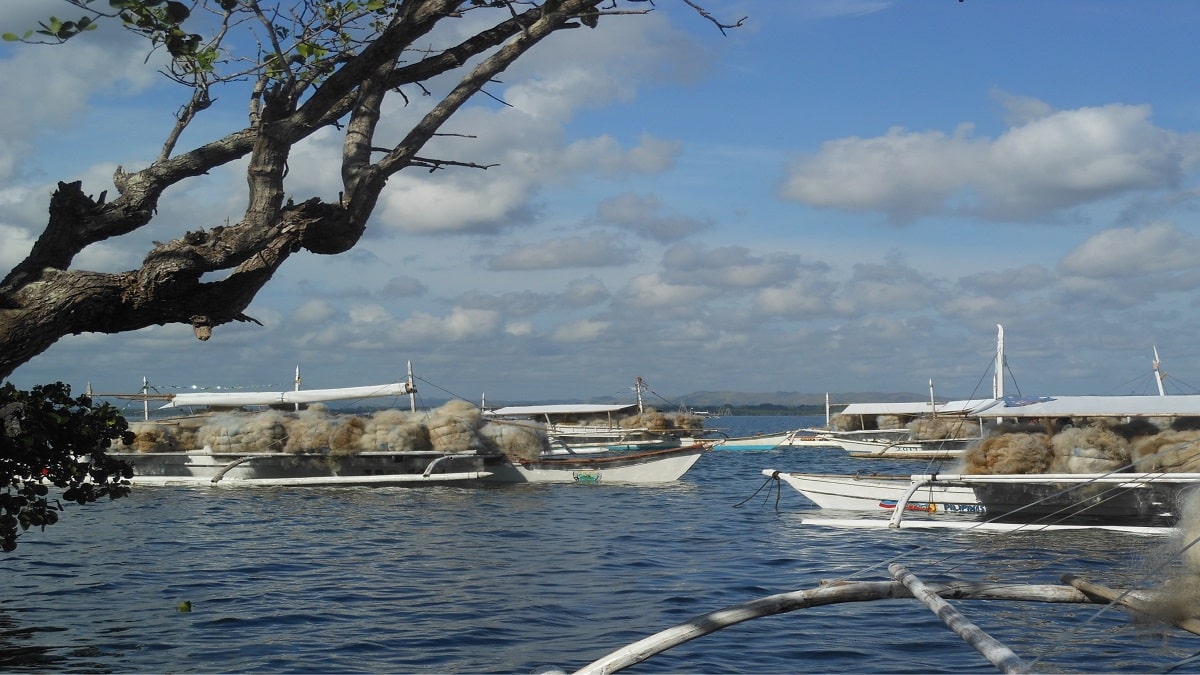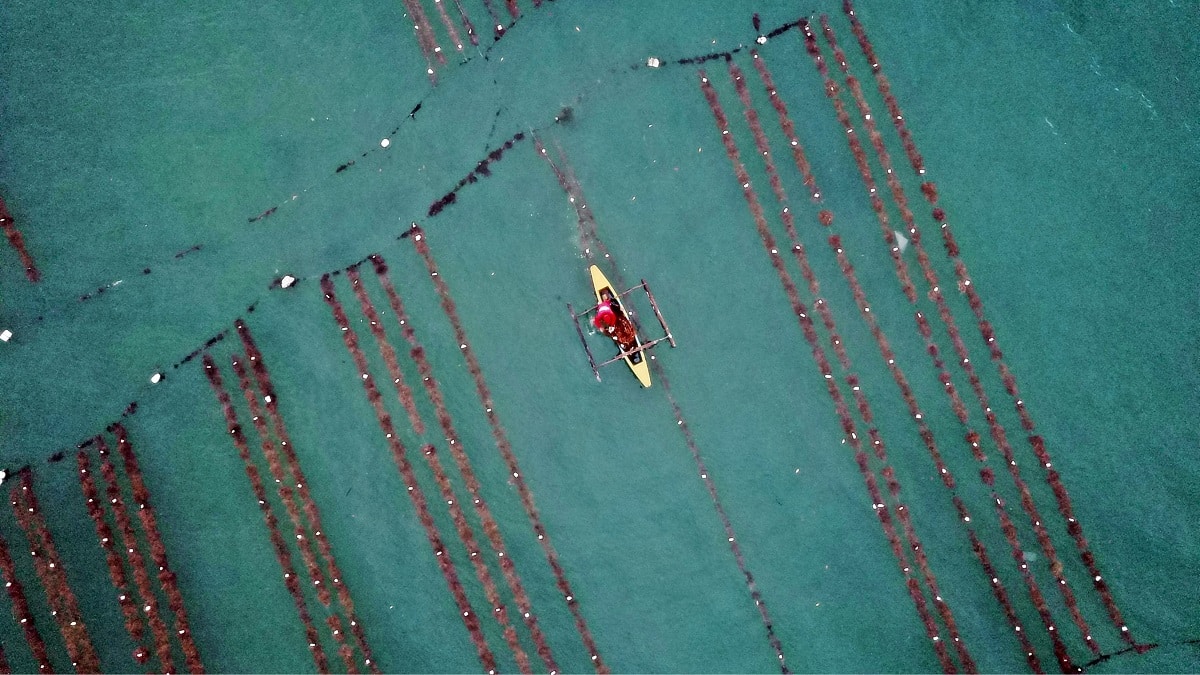A recent report by the High-Level Panel for a Sustainable Ocean Economy has highlighted the potential for regenerative seaweed farming along with marine protected areas to help to restore ocean health. Yet it is “greatly underdeveloped compared to its advantages and biological potential”. This builds on growing recognition of the role that an upscaled and responsible seaweed industry can play in delivering the sustainable development goals set by the United Nations. But the report also clearly identifies the challenges, particularly to ensure that such growth is inclusive and equitable.
Small-scale fishers produce almost all of the globally cultivated Eucheuma seaweeds. It is estimated in the Philippines alone that over 1 million people are dependent on seaweed farming of these species. Currently, they do this through low-tech and inexpensive practices that generate significant benefits which are key characteristics that make it widely accessible and therefore offering a gender-equitable opportunity within communities.

Coast 4C has diverted 267 million metres of fishing net from the ocean. © Amado Blanco/Coast4C
Much of the current high-level focus and funding is on developing offshore commercial seaweed farming. Whilst this is of course important in the long-term, such arrays require significant levels of sub-sea infrastructure and investment, and the engineering solutions are still a work in progress. Employment on such arrays can never reach the level afforded by small-scale seaweed farming practices. The Coast 4C team’s experiences from working in fishing communities for decades, and backed up by plenty of broader livelihoods research, is that fishers do not take well to wage labour, so labour on such arrays is unlikely to benefit many of the small-scale fishers. If all the investment is made in commercial seaweed farming then it is highly possible that commercial seaweed farming will eventually drive down the price of seaweed and undermine the livelihoods of small-scale producers. It is imperative that we learn from the past mistakes of fisheries where commercial fishing provided less than 10% of employment, generated over 70% of global catch (50% of seafood for human consumption), and drove some of the greatest threats to the sustainability of the oceans. Small-scale seaweed farming is not by definition sustainable, but it certainly can be done sustainably. And with the right support, small-scale seaweed farmers can increase production efficiencies.
All the expertise and technology required to sustainably scale-up small-scale seaweed farming, whilst preserving the social benefits, exist. Seaweed farmers need access to regular new seedstock, just like other forms of agriculture. They need access to appropriate finance and crop insurance, just like in other forms of agriculture. And they need access to updated and improved farming and processing methods that keep up with changes in the climate and market demands, just like other forms of agriculture. Finally, they need fair access to the market. As a biomass market with relatively few processors, seaweed farmers would do best to join forces in order to negotiate better prices than trying to shop around individually for the best prices.
At Coast 4C we help connect seaweed farmers to these services or provide them directly in return for community support to implement larger and more effective community-based marine protected areas. This work builds both on our extensive research on the livelihood needs of seaweed farmers, and from our award-winning community-based supply chain for end-of-life fishing nets. We leverage our expertise in establishing and building the capacity of social infrastructure (like cooperatives) to increase efficiencies and the community market share. To date, the supply chain for nets is operational in 32 coastal communities in the Philippines and has been replicated in Cameroon and Indonesia. We have diverted 267 million metres of old fishing net from the ocean, and we have had spillover behavioural impacts with an average 40% reduction in overall plastic pollution on coastlines. It is relatively straightforward to build on our logistics, infrastructure, and relationships in order to integrate seaweed into the supply chain. As a result, in the Philippines, we have supported the establishment or expansion of seven improved community-based marine protected areas (iMPAs) that are each ~50 times larger than the national average MPA size and protect 5,321 ha of the ocean.

Coast 4C supports communities to implement larger and more effective marine protected areas in the Philippines. © Christian Montilijao/ZSL
The next challenge for us is to scale the approach to a larger number of communities, both within the Philippines (starting with our network of 32 villages that supply us with nets) and into neighbouring Indonesia, Thailand, Malaysia, and Vietnam. The market for seaweed is growing rapidly. Through the work we are doing with our university research and industry partners there are exciting new market opportunities such as for bio-based and biodegradable plastics that could help provide opportunities for a growing number of coastal communities to replenish the ocean. And technology developments such as Koltiva‘s SeaweedTrace, leveraging their experience in similar systems for cocoa, coffee, and rubber, can make a significant difference to help ensure efficient management of a rapidly growing supply chain with large numbers of small-scale producers.
The solutions exist. The challenge now for us all is to start believing and investing in small-scale producers.


